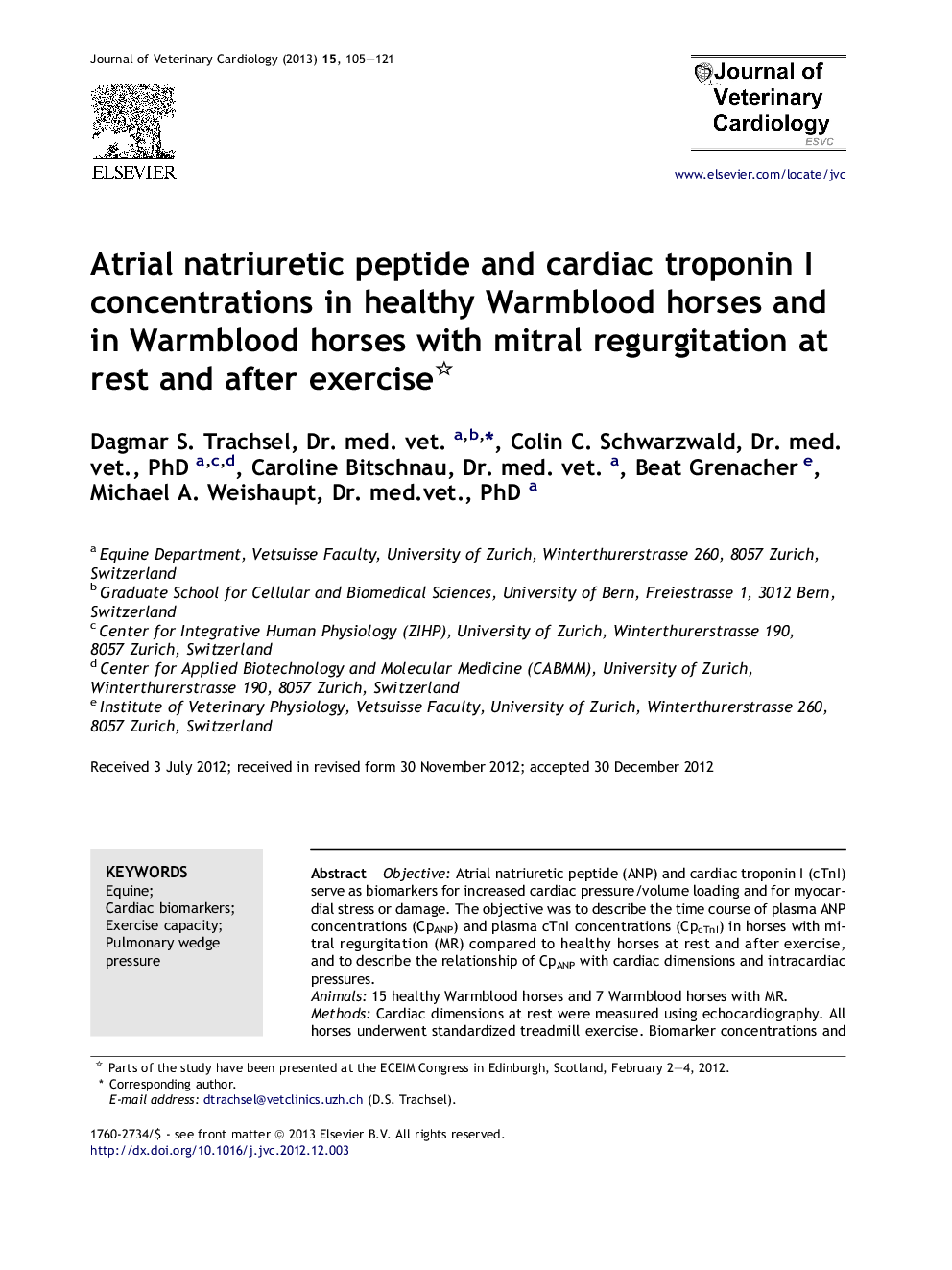| Article ID | Journal | Published Year | Pages | File Type |
|---|---|---|---|---|
| 2400288 | Journal of Veterinary Cardiology | 2013 | 17 Pages |
ObjectiveAtrial natriuretic peptide (ANP) and cardiac troponin I (cTnI) serve as biomarkers for increased cardiac pressure/volume loading and for myocardial stress or damage. The objective was to describe the time course of plasma ANP concentrations (CpANP) and plasma cTnI concentrations (CpcTnI) in horses with mitral regurgitation (MR) compared to healthy horses at rest and after exercise, and to describe the relationship of CpANP with cardiac dimensions and intracardiac pressures.Animals15 healthy Warmblood horses and 7 Warmblood horses with MR.MethodsCardiac dimensions at rest were measured using echocardiography. All horses underwent standardized treadmill exercise. Biomarker concentrations and intracardiac pressures were measured at rest and after exercise. Hypotheses were tested using statistical methods. The level of significance was P < 0.05.ResultsHorses with MR showed increased left atrial (LA) and left ventricular (LV) dimensions but similar exercise capacity compared to healthy horses. Pulmonary capillary wedge pressures (PCWP) and CpANP increased with exercise. Horses with MR had higher PCWP and higher CpANP at rest and after exercise compared to healthy horses, with the maximum difference in CpANP reached 10 min after exercise. CpANP was significantly related to PCWP and – although inconsistently and only in healthy horses – to echocardiographic indices of LA and LV size and function. CpcTnI was low throughout the study in both groups.ConclusionsCpANP is increased in horses with MR and is related to LA pressures and to left heart dimensions. MR is not necessarily associated with exercise intolerance and exercise-induced myocardial stress or damage.
